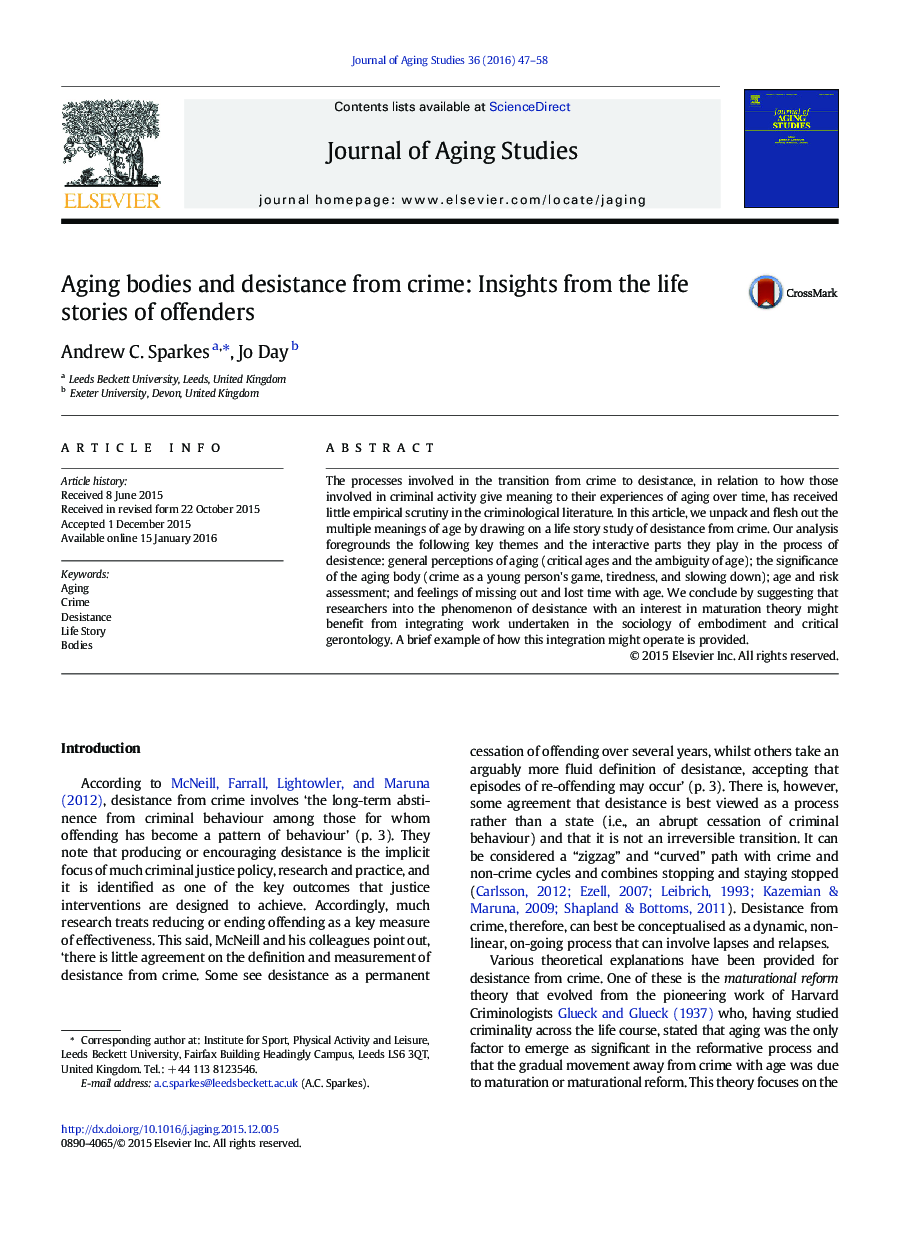| Article ID | Journal | Published Year | Pages | File Type |
|---|---|---|---|---|
| 1081794 | Journal of Aging Studies | 2016 | 12 Pages |
•Examines how those involved in criminal activity give meaning to their aging bodies and how this influences desistance.•Key themes: the ambiguity of age; crime as a young person's game, tiredness, and slowing down; risk assessment, missing out and lost time.•The benefits of collaboration between those working in aging studies, body studies and criminology are outlined.
The processes involved in the transition from crime to desistance, in relation to how those involved in criminal activity give meaning to their experiences of aging over time, has received little empirical scrutiny in the criminological literature. In this article, we unpack and flesh out the multiple meanings of age by drawing on a life story study of desistance from crime. Our analysis foregrounds the following key themes and the interactive parts they play in the process of desistence: general perceptions of aging (critical ages and the ambiguity of age); the significance of the aging body (crime as a young person's game, tiredness, and slowing down); age and risk assessment; and feelings of missing out and lost time with age. We conclude by suggesting that researchers into the phenomenon of desistance with an interest in maturation theory might benefit from integrating work undertaken in the sociology of embodiment and critical gerontology. A brief example of how this integration might operate is provided.
